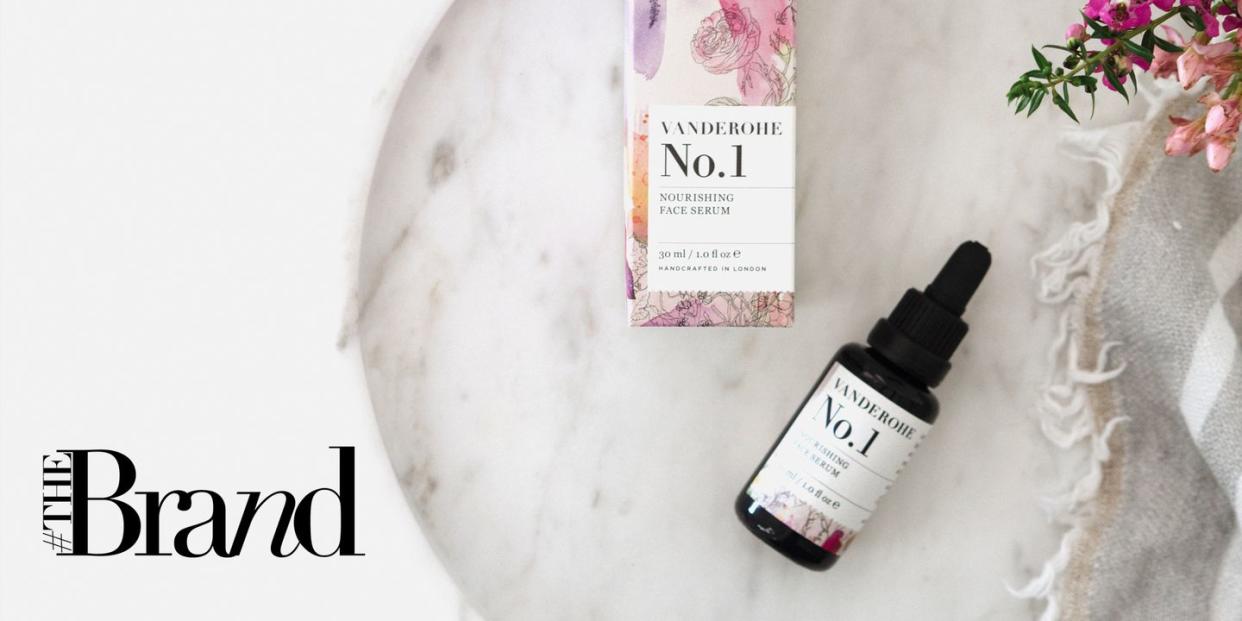Vanderohe's Olivia Thorpe reveals the truth behind plant oils

In our regular feature #TheBrand, Bazaar’s beauty team look into an exciting and efficacious brand taking the beauty industry by storm. This time, it’s a small-but-mighty skincare line spotlighting integrity in ingredient sourcing.
Sustainability is a minefield, especially in beauty. Glass offers a welcome alternative to plastic, but the carbon footprint involved in shipping weighty bottles tempers the appeal. Ditching non-recyclable pumps may be saintly, but issues around product preservation are rife. So far, so confusing.
Part of a small and burgeoning group of Brit-made brands getting things (mostly) right is Vanderohe – a small, beautifully created skincare line that has garnered a truly loyal following.
What’s the story?
The Vanderohe story begins in a similar way to many small-batch skincare brands. Blighted by a slew of skin complaints, founder Olivia Thorpe decided to clear out her bathroom shelves and create something herself.
But it’s what Thorpe did next that sets her apart from the rest of the herd. She dug deeper into the world of plant oils, discovering that not all are created equal – and even fewer are created truly sustainably.
What’s in it?
There is nothing revolutionary about plant oils today, but the way in which Thorpe sources hers is radically unlike most big-name brands. “I did a lot of research into what makes a superior plant oil when formulating my first product,” she says of the best-selling Nourishing Face Serum. “It was clear to me from the very start that there is a vast difference in efficacy between even two organic oils from the same plant.”
During her research, Thorpe discovered that plants grown in their native soil possess the most potent qualities. “When I then read around this theory and learned how a plant’s chemical composition changes in different soils (and how growing them in new territories often requires chemical intervention), it was clear we needed to source from the country of origin," she explains. The decision, she says, was purely quality-led. “There’s no point sourcing locally if pesticides are required for the plant to grow well, and the oil isn’t of a decent quality.”
A post shared by V A N D E R O H E (@vanderohe) on Feb 20, 2020 at 12:44pm PST
Undoubtedly, there are more affordable plant oils available on the market, but Thorpe is keen to emphasise the differences in quality, and subsequent benefits to the skin. “Firstly, I wouldn’t be using something that isn’t made with 100 per cent organic or wildcrafted ingredients,” she says.
The rise in price isn’t purely down to the quality of the plant though. “Producers have to pay for certification, constant monitoring, and have a much harder time at producing a large crop,” Thorpe explains.
Then, there’s the extraction methods. “All our essential oils are extracted by steam distillation; our base oils by cold-pressing. The quality that we require demands these extraction processes,” she explains.
How sustainable is it?
Of course, native-soil sourcing sounds like an exemplary process on the surface, but to wash over the fact that this comes with inevitable air miles would be, well, greenwashing. Thorpe, however, is doing much more than most in the sustainable beauty arena, working an all-encompassing ethos of accountability into the very fabric of the brand.
“We offset the carbon footprint created in sourcing oils from their native countries through everything else that we do,” she says. “Our suppliers all have tree-planting schemes that we contribute to when we purchase any particular ingredient, and we make all our products by hand so there’s no factory machinery running 24 hours a day.” Every product is housed in a recyclable Miron glass bottle, (which preserves the potency of the formula inside), and wrapped in a paper label produced by a certified Carbon Balanced Printer, which offsets its carbon footprint through the World Land Trust. Finally, a portion of Vanderohe’s profits are donated to Maldivian marine conservation group Marine Savers.
“Sustainability is constantly evolving and we are making every effort to be at the very front of that – to research, to learn, to improve. It’s the entire ethos upon which I founded the brand, so I take it very seriously” says Thorpe.
What skin types will it suit?
Of course, anyone with a sensitivity to essential oils should alight here, but for everyone else, there’s a lot to love. Both the stand-out Nourishing Face Serum and the luxurious Purifying Cleansing Oil are formulated with high-grade plant oils, and little else. Each bottle comes with a beautifully illustrated map, denoting the origin of every ingredient, and its benefits for the skin.
What should I try?
The cult hero serum should undoubtedly be top of anyone’s list here. More of an oil in texture, this beautifully (and naturally) scented floral formula sinks straight into skin, reducing redness and delivering deep moisture.
Apricot kernal oil, sourced from Pakistan, brings a heavy dose of antioxidant protection, while Chilean rosehip smooths texture and works to fade pigmentation. Antimicrobial geranium (from Egypt) is a welcome addition for anyone looking to reduce acne scarring, while Bulgarian rose otto boosts the inflammation-boosting properties.
The potential benefits are multi-faceted: with regular, consistent use, moisture loss will be decreased, inflammation reduced, and skin will feel more resilient, healthy and glowing.
If you’re keen to adopt a simple, sustainable skin routine that harnesses the gentle yet often transformative powers of plants, you’re sure to become enamoured.
Like this article? Sign up to our new newsletter to get more articles like this delivered straight to your inbox.
You Might Also Like


